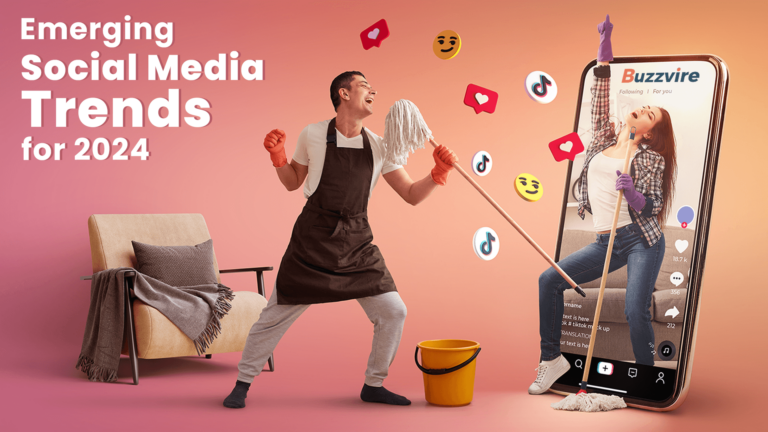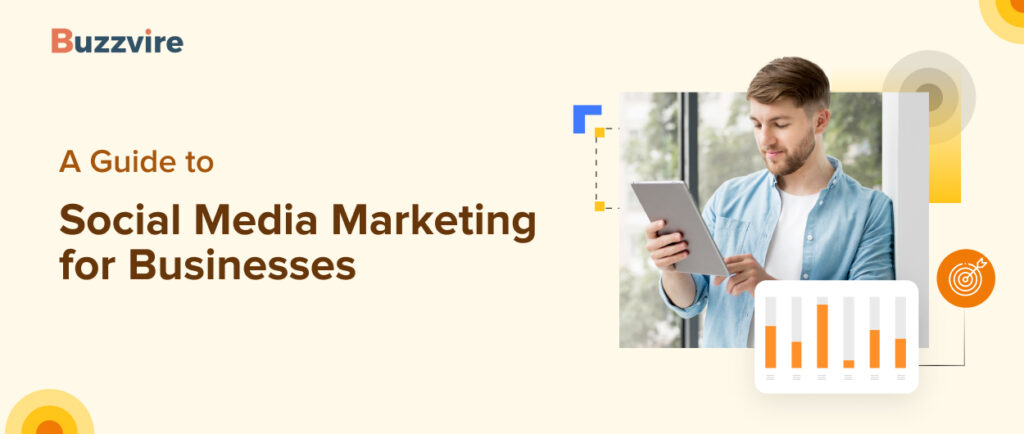
How often has something like this happened to you?
You wake up in the morning and instinctively reach for your phone. You scroll through social
media apps and find a post showcasing a product that sparks your interest.
Maybe you were thinking of buying it. Maybe you wanted to replenish the stock. Maybe you’re just interested in such products.
In a matter of seconds, you find yourself browsing through the brand website and either adding something to your wishlist or making a purchase eventually, through the course of the day.
That’s the spell social media marketing has cast. With its personalized and dynamic approach, it has revolutionized the way businesses connect with their audience.
Social media marketing has a reach and impact beyond traditional advertising. You can tap into the power of platforms like Facebook, Instagram, Twitter, and LinkedIn to build interactions and brand loyalty and achieve your business goals. Whether your business is a small startup or a multinational corporation, social media has proven to have immense potential to reach a vast and engaged audience.
And that is why mastering the art of marketing is so important, especially in this digital age, where everyone is so active on social media. You can use it to not only showcase your products and services but also create genuine connections with your customers. With the right strategies, you can take your online presence and brand awareness to an all-new level and build a community of loyal followers.
Why is Social Media Marketing Important for Business?
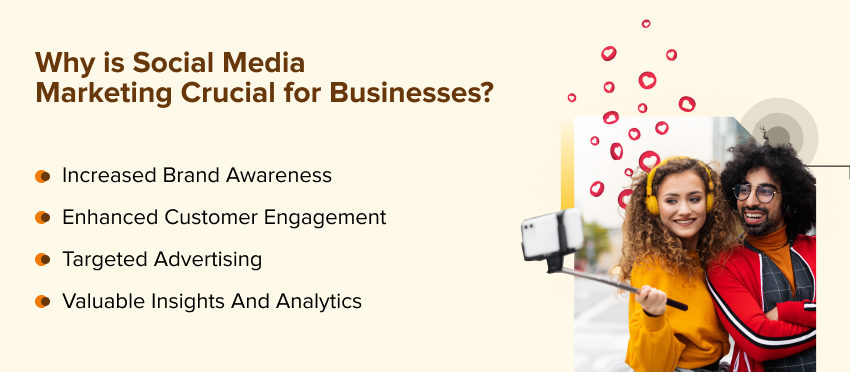
As we saw earlier, in an age where almost everyone is on social media, it’s a waste to let go of the opportunity to reach them there. Statistica’s study in 2021 showed that approximately 4.48 billion people across the world use social media. That’s a significant portion of the global population.
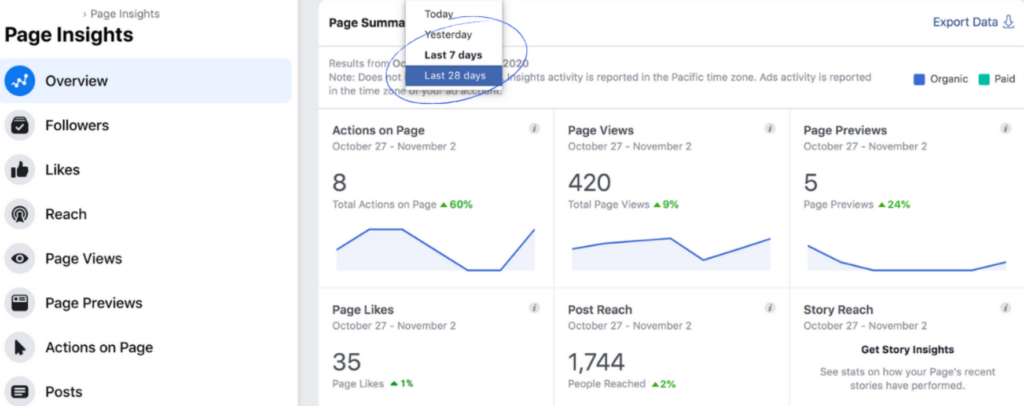
The ways to connect with your audience as a business are many and surprising. Let’s look at three compelling reasons businesses should invest in social media marketing:
- Increased Brand Awareness
The opportunity to reach a vast pool of audiences is a great base to build brand awareness.
With billions of active users across various platforms, you can establish your presence and expand your reach to potential customers. This way, you can reach out to an audience that may not have been aware of your products or services.
Econsultancy noted that 80% of marketers use social media to increase website traffic. This statistic proves that your active presence and engagement on social media can, in turn, pave the way for better brand awareness and consideration.
- Enhanced Customer Engagement
Social media lets your business interact directly and immediately with your audience. You can engage them through comments, messages, and other features, create conversations, address customer queries, and build long-lasting relationships.
What’s more, it also adds credibility and affinity for your brand. Sprout Social reported that about 71% of consumers would likely recommend a brand if they have a positive experience with it on social media. All the more reason you should consider being active on social media.
- Targeted Advertising
A study by HubSpot says that 54% of social media users research products and make purchase decisions. And that’s a powerful statistic showcasing just how much social media can impact businesses.
With its high-performing advertising tools that you can use to target specific demographics, interests, and behaviors, you can effectively reach your desired audience and maximize your marketing efforts for better conversions.
- Valuable Insights and Analytics
Tapping into the audience on social media platforms also gives you valuable insights and analytics about your audience. That includes a better understanding of their demographics, engagement metrics, and preferences.
With this data, you can make informed decisions, optimize your strategies, and customize your content to better resonate with your target market.
Now that you’ve seen the incredible advantages of social media marketing for your business let’s talk about how you can leverage it for maximum return on investments (ROI).
How to use Social Media Marketing for Maximum ROI?
It’s evident how you can connect with your target audience personally through social media marketing.
It goes much beyond just posting your content. Social media is about creating a community, building relationships, and sparking conversations that connect with your audience. And for that, you need an understanding of what their needs, pain points, and desires are. These insights will help you customize your marketing strategy accordingly.
So, when you invest time and effort into social media marketing, there’s limitless potential for ROI to achieve! Check out these essential aspects to consider for maximum ROI:
5 Ways to Maximize ROI with Social Media Marketing:

- Set Clear Objectives
What are your goals for social media marketing? Define them. Do you want to boost your brand awareness, website traffic, get leads, or boost your sales? Once your objectives are set and measurable, you can align your strategies accordingly.
- Target the Right Audience

Understand your target audience thoroughly. Identify your audience demographics, interests, and behaviors through deep research. This data will help you create highly-targeted content and ads that connect with your audience, increasing your likelihood of conversion.
- Create Compelling Content
There’s no shying away from Bill Gates’ all-too-famous quote, “Content is king.” It’s just as relevant as it was in the 90s. Create and post content that grabs attention, educates, entertains, and inspires your audience. Use visuals, videos, and storytelling techniques to make it more saveable and shareable.
- Engage and Interact
Social media is not a one-way street. You need to engage with your audience with regular responses to messages, comments, and tags. Show that you’re genuinely interested, address queries and concerns, and encourage discussions. Building a community of loyal followers will further lead to brand affinity, trust, credibility, repeat business, and recommendations.
- Track and Analyze

By regularly monitoring key metrics like your engagement, reach, conversions, and website traffic, you can use analytics tools to get insights into what’s working and what needs improvement. This data-driven approach will help you optimize your strategies and better your ROI.
Eventually, social media marketing is not just about the number of followers or likes on your handle and posts. It’s about building connections and conversions and ultimately maximizing your return on investment.
How to Leverage Social Media Platforms to Boost Your Business?

First and foremost, it’s essential to understand that each social media platform has a unique landscape. For example, Instagram is more visual; Twitter is more conversation-and-current happenings-led. Implementing the same strategy across these different landscapes is, therefore, futile.
Let’s look at what objectives you can fulfill by leveraging each platform.
With more than 2.8 billion active users monthly, it’s the go-to platform to:
- Build a robust online presence
- Engage with your audience through posts, live videos, and stories
- Reach your ideal customers through targeted ad campaigns
With 1 billion monthly users, Instagram is best to:
- Showcase your brand personality and creativity with rich images, snappy stories, and reels
- Maximize relevant hashtags for reach
- Partner with influencers for increased visibility
- Make the most of user-generated content to build your community
The fast-paced hub of real-time conversations with 330 million monthly active users is perfect for:
- Quick updates
- Customer support
- Engaging in relevant trending topics
- Making your brand voice heard through retweets and concise messaging
A goldmine for B2B businesses, with over 774 million users, LinkedIn can help you:
- Build your network with industry professionals
- Discover new opportunities
- Publish thought leadership articles and share industry insights
- Engage in relevant groups to establish authority
Snapchat
The hub for the younger demographic, with 550 million monthly active users, Snapchat can be leveraged to:
- Reach out to a target audience of Gen Z and millennials
- Create a sense of urgency and exclusivity
Now that we’ve gone through the diverse social media landscape, let’s talk about how you can optimize your profiles and content for maximum impact. Here’s a list of guidelines you can follow:
8 Tips to Optimize Your Social Media Profiles and Content:
- Create a consistent visual identity and brand voice across all platforms.
- Use high-quality visuals and attractive graphics that align with your brand’s personality.
- Respond to comments, messages, and mentions promptly.
- Show genuine interest in your audience.
- Utilize interactive features like polls, quizzes, and Q&A sessions to keep your audience engaged.
- Focus on creating quality rather than quantity content with relevant content that solves your audience’s pain points, educates them, or entertains them.
- Mix up your content formats – from videos and infographics to blog posts and user-generated content.
- Keep a tab on the analytics to track your performance, understand what content and platform works best, and refine your strategies accordingly.
So, what are the best practices you should keep in mind for social media marketing across all platforms and as a whole?
6 Best Practices for Social Media Marketing

- Define Your Goals

Whether you want to increase your brand awareness, improve website traffic, get leads, or boost sales, well-defined objectives will guide your strategy and help you measure success.
- Know Your Audience
Identify your audience’s demographics, interests, behaviors, and pain points. This data will help you create tailored content and drive effective engagement.
- Stay Consistent
Keep your branding consistent across all platforms, utilizing your logo, colors, and tone of voice. It will build trust and help your audience identify and connect with your brand.
- Align Your Content Strategy
Ensure your content strategy syncs with your business goals and resonates with your audience. A mix of informative, entertaining, and engaging content can keep your followers engaged. You can also plan and schedule your posts in advance with a content calendar.
- Visual Appeal

Visual content is the first to grab attention and drive engagement. Use attractive images, videos, infographics, and other visual aids for your posts, ensuring they are high-quality and consistent with your brand identity.
- Engage and Respond
As we’ve seen earlier, social media is about conversations and community. Engage with your audience with prompt responses to comments, messages, and mentions. Show you’re genuinely interested, address concerns, and encourage discussions.
Measuring Your Social Media Marketing Strategy Success
Now that we have a good understanding of the varied platforms and the best practices let’s move on to gauging the effectiveness of your efforts. Tracking and measuring key metrics that align with your goals will help you measure your performance.
5 Social Media Metrics You Can Consider:
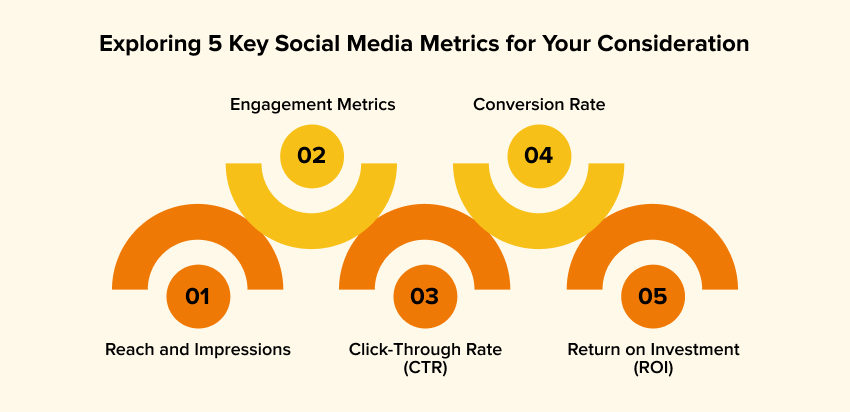
- Reach and Impressions
Reach can be measured by the number of people who see your posts. The total number of times your content is displayed sums up your impressions. These metrics determine your brand’s potential visibility.
- Engagement Metrics
Your posts’ likes, comments, shares, and retweets show how much your audience engages with your content. The higher your engagement, the better your content resonates with your audience and encourages interaction.
- Click-Through Rate (CTR)
CTR is the percentage of people that click on a link or call to action in your posts. This rate determines how effectively your content drives traffic to your website or landing pages.
- Conversion Rate
Your conversion rate is the percentage of conversions you get through actions like sign-ups, purchases, or form submissions through social media. This metric directly measures social media’s impact on your bottom line.
- Return on Investment (ROI)
The ROI of your social media marketing is the revenue generated against the amount spent. Do consider direct as well as indirect revenue that includes brand awareness, customer lifetime value, and customer retention.
Common Mistakes in Social Media Marketing and How You Can Avoid Them
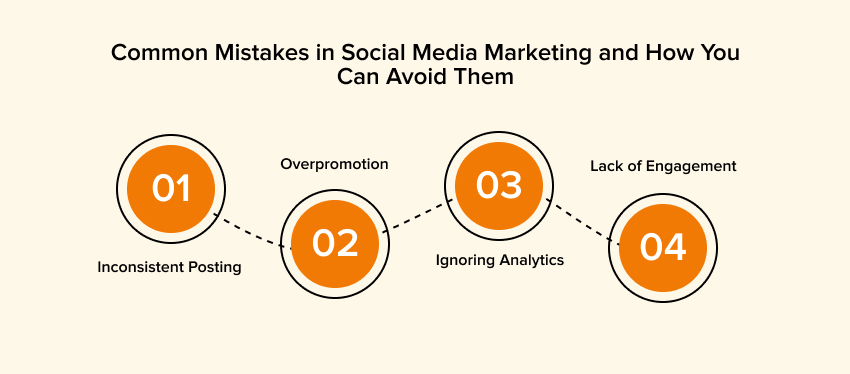
- Inconsistent Posting
Can lead to: Lack of engagement and reduced visibility
Solution: A content calendar to develop a consistent posting schedule and maintain a steady flow of content
- Overpromotion
Can lead to: Alienation of your followers
Showing your brand’s human side with behind-the-scenes moments and candid conversations is always effective in winning their trust.
Solution: Striking a balance between promotional and non-promotional content.
- Disregarding Analytics
Can lead to: Issues in measuring your success and making decisions
Solution: Regularly monitoring analytics to gauge what’s working and what’s isn’t, and make necessary optimizations accordingly.
- Low Engagement
Can lead to: Missing out on opportunities to build relationships and loyalty
Solution: Responding to messages, comments, and tags promptly, and participating in relevant conversations.
On an ending note, here’s a list of the emerging social media marketing trends of 2023 you can explore:
5 Emerging Social Media Marketing Trends

- Originality
Audiences are instinctively more inclined toward genuine connections, real stories, and relatable content.
- Short Videos Content
Recent times have witnessed a sharp decline in attention spans, which explains why short videos are taking the spotlight. You can use platforms like TikTok and Instagram Reels to attract your audience within seconds. Snackable and visually appealing videos that entertain, educate, or inspire while adhering to your brand tone and personality are the order of the day.
- Interactive Content
Polls, quizzes, surveys, and interactive storytelling are gaining recognition with active audience participation. It is excellent to build engagement and gain valuable insights.
- Niche Platforms
Niche platforms are an excellent option for targeted engagement. Explore platforms like Reddit, Twitch, or LinkedIn groups that your target audience frequents. Customize your content accordingly. Niche platforms will help you build a dedicated following and establish your industry expertise.
- Social Commerce
Social commerce integrates shopping features into platforms, making purchases within the app accessible. Utilize shoppable posts, product tags, and in-app checkouts to simplify buying for your audience and turn engagement into conversions and revenue growth.
Conclusion and Key Takeaways
Undoubtedly, social media marketing is vital to connect your business with the audience, build brand awareness, and drive growth.
Keeping up with the best practices, analyzing your key metrics, avoiding common mistakes, and staying updated with emerging trends can help you maximize the potential of social media.
Don’t forget to be agile, adapt to its ever-evolving landscape, and constantly refine your strategies for optimal results and maximum ROI.
Frequently Asked Questions



